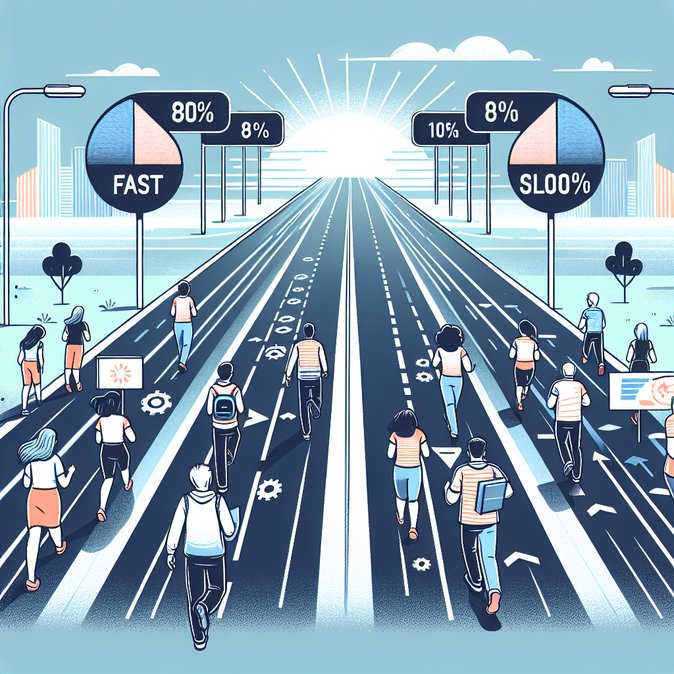
The Albanese Government has unveiled Ministerial Direction 115 (MD 115), the most sweeping overhaul of student-visa case-management since pandemic travel curbs were lifted. Effective 14 November 2025, the directive links processing speed for Subclass 500 applications to how closely each university, college or VET provider sticks to the National Planning Level (NPL) quotas set for 2026.
Under the new framework, Home Affairs officers will sort offshore student-visa files into three priority ‘lanes’. • Priority 1 (fast-track, 1-4 weeks) is reserved for providers that have filled less than 80 per cent of their annual allocation of new overseas student commencements. • Priority 2 (standard, 5-8 weeks) goes to institutions sitting between 80 per cent and 115 per cent of their target. • Priority 3 (slow lane, 9-12 weeks or longer) captures providers that push enrolments beyond 115 per cent—or 15 per cent above quota.
![Canberra launches Ministerial Direction 115, creating new three-tier student-visa processing ‘lanes’]()
Assistant Minister for International Education Julian Hill said the ‘lane’ system is designed to “strengthen and balance” the distribution of foreign students and protect the integrity of Australia’s A$37 billion education export. Last year’s MD 111 helped arrest runaway growth—student-visa lodgements fell 26 per cent—but Department of Education data show some private colleges are still exceeding their caps by up to 50 per cent. The new directive adds teeth by slowing visas for over-enrolling providers while rewarding those that diversify into regional campuses.
For mobility managers the policy matters on two fronts. First, corporates that rely on pathway colleges to feed future graduates into skilled-migration pipelines can expect steadier, more predictable visa timetables—provided their partner institutions remain within quota. Second, global HR teams should alert prospective assignees that application times will now vary sharply depending on where they enrol; choosing a Priority-3 provider could add months to start dates.
Unlike a hard cap, MD 115 does not block enrolments outright: universities may still offer places, but students face longer waits and a higher risk of deferrals. Certain cohorts—schools, ELICOS, postgraduate research, government-funded scholars and applicants from Pacific Island or Timor-Leste partners—retain Priority 1 status regardless of quota. Home Affairs will brief providers this month and has warned that “integrity issues will be acted upon regardless of assigned priority.”
Under the new framework, Home Affairs officers will sort offshore student-visa files into three priority ‘lanes’. • Priority 1 (fast-track, 1-4 weeks) is reserved for providers that have filled less than 80 per cent of their annual allocation of new overseas student commencements. • Priority 2 (standard, 5-8 weeks) goes to institutions sitting between 80 per cent and 115 per cent of their target. • Priority 3 (slow lane, 9-12 weeks or longer) captures providers that push enrolments beyond 115 per cent—or 15 per cent above quota.

Assistant Minister for International Education Julian Hill said the ‘lane’ system is designed to “strengthen and balance” the distribution of foreign students and protect the integrity of Australia’s A$37 billion education export. Last year’s MD 111 helped arrest runaway growth—student-visa lodgements fell 26 per cent—but Department of Education data show some private colleges are still exceeding their caps by up to 50 per cent. The new directive adds teeth by slowing visas for over-enrolling providers while rewarding those that diversify into regional campuses.
For mobility managers the policy matters on two fronts. First, corporates that rely on pathway colleges to feed future graduates into skilled-migration pipelines can expect steadier, more predictable visa timetables—provided their partner institutions remain within quota. Second, global HR teams should alert prospective assignees that application times will now vary sharply depending on where they enrol; choosing a Priority-3 provider could add months to start dates.
Unlike a hard cap, MD 115 does not block enrolments outright: universities may still offer places, but students face longer waits and a higher risk of deferrals. Certain cohorts—schools, ELICOS, postgraduate research, government-funded scholars and applicants from Pacific Island or Timor-Leste partners—retain Priority 1 status regardless of quota. Home Affairs will brief providers this month and has warned that “integrity issues will be acted upon regardless of assigned priority.”







